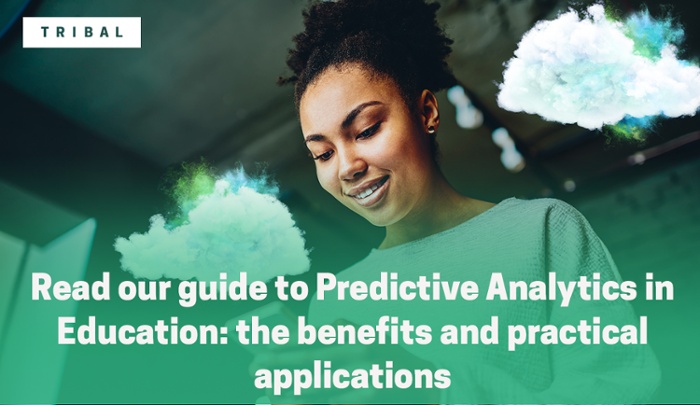What is predictive analytics?
Predictive analytics use data, machine learning and statistical algorithms to work out the likelihood of future outcomes, by analysing patterns in historical data.
Although the data might seem complicated, the process itself is simple.
Organisations and institutions use predictive analytics to uncover trends in historical data and make informed decisions about the future. The process can help set clear benchmarks for different data and create models to anticipate and understand risks. By grasping the relationship between datasets and outcomes, businesses can forecast the impact of a decision.
Examples of predictive analytics
Predictive analytics is often thought of as new technology. It isn’t. It has been used for years in many sectors. Most organisations collect data, whether it’s product logistics, customer transactions, or student performance. By highlighting trends in existing data, businesses can predict how similar customers may act.
For example, in healthcare, it can determine the likelihood that a patient will cancel or skip an appointment; or in insurance, it can help to support fraud prevention. Another example would be financial services, predicting whether a loan applicant is likely to repay the loan based on specific characteristics that the system will request at application. It uses ‘big data’, complex datasets that can be cumbersome to manage or interact with manually. For this reason, business intelligence software is utilised to bolster predictive analytics’ accessibility. These tools help institutions by providing visualisations of the data, giving users a straight-forward way to access and analyse often complex data. The technology removes the long, laborious tasks of building complex technical scripts and algorithms – meaning decision-makers can access this data and make highly informed choices themselves.
The evolution of predictive analytics in education
To many, the idea of big data analytics is often thought of in relation to the digital technology, marketing, finance or healthcare sectors. Increasingly, predictive analytics is being used to drive systematic improvements within the education sector, with institutions using existing student data to gain insights on current or future student performance.
Predicting student outcomes has always been important to the education sector; schools, colleges, and higher education learning providers have historically used data linked to examination results and attendance records to predict a student’s academic success. Records were traditionally collated and analysed manually, and any discrepancies relied on human intervention. This meant that data was likely to be siloed within departments, and interventions may not always have been immediate.
As institutions and technology have both evolved, this data has become more complex. In our modern education environment, the rapid rise of digital learning and educational technology has led to an exponential increase in data collection. A huge array of useful insights can now be gleaned from data, providing the opportunity to improve and support student performance as well as inform sound operational and commercial decision making.
A student management system will hold a variety of academic and student data but beyond this, institutions will record engagement with elements of digital learning, library services, or extracurricular activities. Whether on-campus or through online portals, students experience numerous data touchpoints. Predictive analytics can use this ‘big data’ to highlight trends and take a holistic view of an institution’s performance.
The importance of predictive analytics in education
By gaining these insights through data modelling, colleges, universities and training providers can identify potential future issues and proactively deal with them to enhance the student experience whilst also focusing on the bottom line. But as the number of datasets increase, so does the complexity of analysis. The beauty of data is that it is ever-evolving. Once institutions have established and built out core analytics models for understanding outcomes, these will adjust, and update based on any new data that the organisation receives.
For example, an educational institution that has a predictive analytics model in place to understand the likelihood of a student passing or failing a course, based on existing data, can drop a new student’s application into the existing model to see what the predicted outcome would be for this individual.
Predictive analytics play an important role in driving efficiency improvements to all areas of the institution. Data from different parts of the organisation can be used to inform predictive models, contextualising the student experience within the whole institution. This helps organisations address areas that have the most impact on student performance; in a world of tightened resources, predictive analytics can be used to improve attendance, performance and enrolment.
TOPICS:
SHARE THIS ARTICLE:




